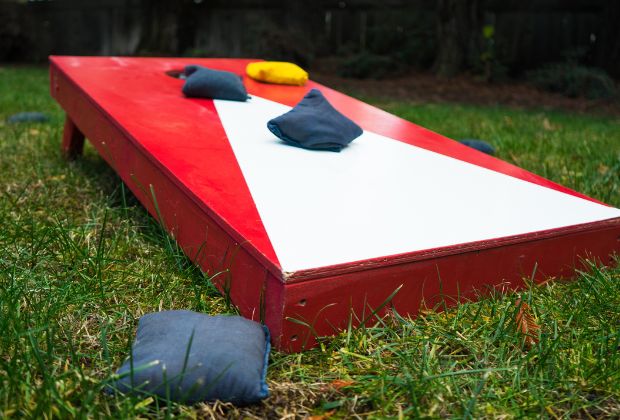Cornhole is a beloved activity enjoyed by people of all ages across the world. This popular backyard game is easy to learn and offers a fun, competitive experience for casual players and dedicated enthusiasts. In this guide, we’ll delve into the rules you should learn to play cornhole properly, the game’s history, and a few techniques for beginners.

A Brief History of Cornhole
The origins of cornhole are a bit of a mystery. Some people claim the game originated in Germany in the 14th century. Others attribute the creation of cornhole to the Blackhawk tribe of Illinois. No one knows for certain where the fun comes from.
The modern version of the game, with its characteristic slanted boards and holes, gained popularity in the United States, particularly in the Midwest. Cornhole has since evolved into a widely played pastime at family gatherings, tailgating parties, and even competitive tournaments.
Setting Up the Court and Player Positions
Before diving into the gameplay, it’s crucial to understand the basic setup. A standard cornhole court consists of two wooden or plastic boards, each featuring a six-inch hole. Place the front edges of the boards 27 feet apart with 33 feet between the back edges. You can learn more about board distance in the official cornhole rules and standards.
Two teams of players take turns standing behind the front edge of their respective boards. The objective is to toss the cornhole bags, filled with synthetic material or actual corn kernels, into the hole or onto the board to score points.
Throwing Techniques and Tips for Accuracy
Tossing the bags comes with two main techniques: the flat, spinning throw, and the arc throw. The flat, spinning throw releases the pack with a slight spin, so it lands flat on the board and slides toward the hole. The arc throw, on the other hand, relies on a higher, arcing trajectory to drop the bag onto the board, ideally near or in the hole.
Practice is essential when trying to improve your accuracy. Focus on honing your aim by finding a consistent release point, maintaining a stable stance, and keeping your eye on the target. Experiment with different grips and throwing styles until you find the most comfortable one for you.
Scoring System and Fouls
In cornhole, the scoring system is relatively straightforward. Any bag that goes through the hole counts as three points, even if it falls in after the original throw. Any bag on the board after the round ends counts as one point for that team. The team with the highest score at the end of the round subtracts the other team’s effectiveness and adds the difference to their overall score. The first team to reach or exceed 21 points wins the game.
It’s important to avoid committing fouls, as they can negate a player’s toss. Common fouls include stepping on or over the front edge of the board during the throw or having the bag contact the ground before landing on the board.
The rules you should learn to play cornhole properly are imperative for beginners, especially if playing professionally interests you. The techniques outlined above will put you on the path to success. Cornhole is one of the best games for fun in the backyard, no matter your skill level. So, grab your cornhole bags, gather your friends and family, and start perfecting your toss on the way to becoming a cornhole champion!
 World inside pictures Collect and share the best ideas that make our life easier
World inside pictures Collect and share the best ideas that make our life easier





